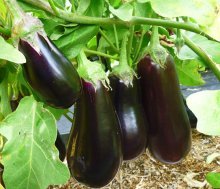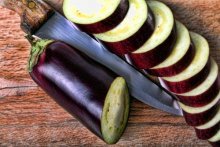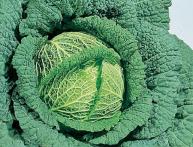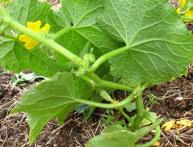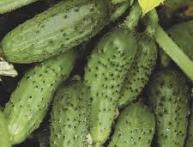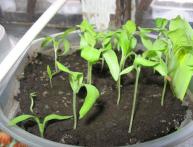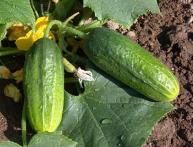Eggplants, benefits and harms, use of eggplants in folk medicine and cooking
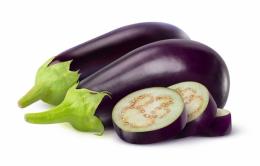
Eggplants or blue ones are vegetables that, despite their origin from warm places, are excellently grown in fairly cool climates. Eggplants owe their popularity to cooking; a great variety of dishes are prepared from them. In addition, these vegetables are also used in folk medicine. To understand what benefit and harm to eggplant, you need to figure out what kind of plant it is, its origin, the chemical composition of the fruit.
Content:
Description of the eggplant plant
Eggplant or dark-fruited nightshade is a representative of the genus Nightshade, the Solanaceae family. It is a close relative of the potato, a vegetable pepper, tomatoes. The homeland of eggplant is India, from there it spread throughout Asia and Africa. Eggplant came to European countries in the 5th century, but only in the 19th century did eggplant begin to be cultivated and grown as a garden plant. Wild eggplant, the ancestor of cultivated varieties, grows as a perennial form; in cultivation, eggplants are grown as annual vegetables.
Most representatives of the species are powerful and strong plants. They can reach one and a half meters in height. Eggplants have a well-developed root system. Its roots easily penetrate to a depth of one meter. The stems are strong, slightly spiny, green or purple.The leaf blades are whole, elongated, with thick petioles. The color of the leaves is green, maybe with a purple tint. The flowers are usually solitary or collected in small drooping inflorescences. The corollas are purple. The eggplant fruit is a complex berry. The weight of the fruit is from forty grams to one kilogram. The shape is round, elongated or pear-shaped. Edible when slightly unripe. Ripened seeds brown-yellow color. Currently, varieties with fruits of different colors have been bred:
- white
- light green
- variegated
- orange
- dark purple
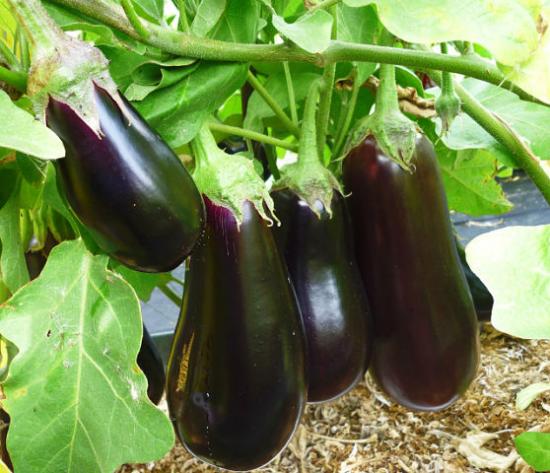
Also, modern varieties differ from the usual blue ones. There are already eggplants in the shape of a ball and long narrow icicles. But regardless of shape and color, all fruits have approximately the same composition. It is the chemical composition that determines the benefits and harms of eggplant.
Eggplant, benefits and harm
Fruit eggplant contain up to 14% dry matter:
- proteins 1.5%
- carbohydrates 5%
- fat 0.6% (mainly in seeds)
- Carbohydrates include:
- fructose
- glucose
- sucrose
- starch
Eggplant fruits are rich in valuable salts:
- potassium
- gland
- manganese
- aluminum
- magnesium
They contain:
- anthocyanins
- pectin
- cellulose
- ascorbic acid
- carotene
- a nicotinic acid
- thiamine
All this determines the nutritional and medicinal value of the fruit. The benefits of eggplant are primarily:
- in their low calorie content
- diuretic properties
- ability to normalize heart function
- the presence of substances that cleanse blood vessels of cholesterol
- content of compounds that improve joint condition
Therefore, eating eggplant is recommended for people suffering from atherosclerosis, edema, and excess weight.Recent studies have shown that polyphenols contained in eggplants increase sustainability cells from damage. They protect individual cells and the entire body from cancer and reduce the risk of pathological mutations. The skin of dark-colored eggplants contains the beneficial substance nasunin. Thanks to it, the lipid membranes of brain cells are not destroyed and their aging slows down. Nasunin prevents the death of brain and nervous system cells. Thanks to it, memory and central nervous system function improves.
Nasunin has a beneficial effect on the course of arthritis; it is able to remove excess iron, an excess of which is just as harmful as a deficiency. However, like many nightshades, eggplants contain the poisonous alkaloid corned beef M. The concentration of this substance in the fruits increases as they ripen, so eating overripe fruits can cause solanine poisoning. In addition, people with problems with the kidneys and gallbladder should not overuse eggplant dishes. And during periods of exacerbation of diseases, complete abandonment of them will be required. It’s worth figuring out how you can prepare necessary and healthy medicines and eggplant dishes.
Eggplants in folk medicine and cooking
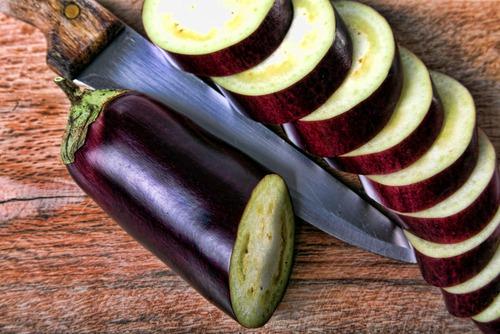
Eggplants in folk medicine
For external use, rub fresh eggplant along with the peel and squeeze out the juice. Lubricate wounds that do not heal for a long time or apply compresses to them. To stabilize weight and relieve swelling, you can prepare eggplant puree. To do this, bake three medium-sized eggplants in the oven until soft, chop and simmer adding half a glass of milk. Chop parsley into puree and replace it with dinner for three weeks.A choleretic remedy from eggplants is prepared as follows: a medium eggplant without peel is finely chopped, poured with a glass of boiling water, left in a warm place for half an hour and consumed half a glass before meals three times a day.
In case of disturbances in the functioning of the heart and blood vessels, to reduce cholesterol levels, squeeze the juice from fresh eggplant, grated, and consume it with meals, one to two spoons three times a day for ten days.
Eggplant in cooking
When preparing eggplant dishes, keep in mind that the peel contains important vitamins and nasunin, so it is important to cook it unpeeled. The bitterness can be removed by soaking the sliced eggplant for a short time in cold water. Do not subject eggplants to prolonged heat treatment and cook it either without oil at all or with a minimal amount of it. Based on all this, the healthiest thing is to grill eggplants along with other vegetables.
For caviar, stew or other dishes, it is better not to fry eggplants, but to bake them in the oven without oil. The benefits of any dish made from them are enhanced by adding garlic, nut, greens. Cut the eggplants lengthwise into slices. Place them in a bag and bake until soft in the microwave, this usually takes five minutes. Fry the onion in oil until transparent, take about 1/3 of the onion from the eggplant. Place soft eggplant slices with the onion and simmer all together for 10 minutes. Salt, pepper, squeeze out the garlic. Delicious and healthy eggplants will be ready in less than 20 minutes. It is important to remember that eggplants are contraindicated for consumption during periods of exacerbation of kidney and gastrointestinal diseases.
Video about the benefits of eggplant:
Interesting information about the vegetable garden

